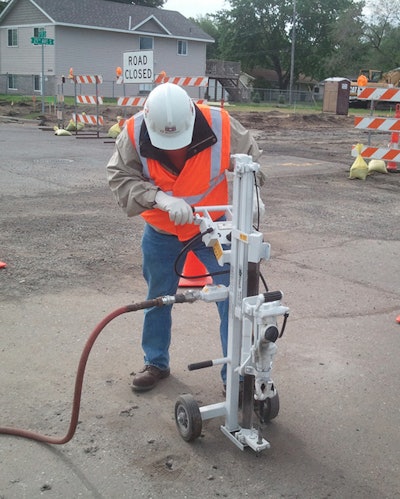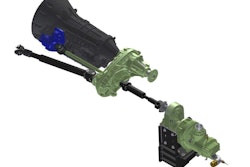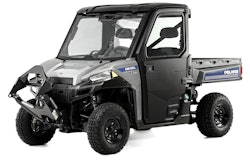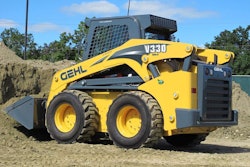
The Minnich Hornet is a pneumatic drill on a wheeled carrier assembly. Compared to the conventional technique of drilling these holes with a jack-hammer-sized, hand-held drill, the Hornet is simply wheeled into place and activated with a switch.
Strain on the operator’s back is eliminated because he doesn’t have to continually lean over the drill as the hole deepens or bend down and pull a heavy drill of the hole. An additional ergonomic advantage is gained in that the Hornet positions the operator’s hands away from the main source of vibration.
Hand-held drills have the tendency to skitter and skip on top the pavement making precise drilling difficult and forcing the operator to wrestle the drill into place. The Hornet eliminates this problem by having the carrier secure and precisely place the drill.
Minnich offers the Hornet in three capacities: the 24/22 which drill to a depth of 18 and 20 inches respectively, the 30/27 with drill depths of 23 and 26 inches and the 36/40 that go to 36 or 32 inches. The drills rotate and hammer and require a compressor with at least 90 cfm of air to operate. There are two hammer choices, a 15 pound hammer which drills holes 5/8 inch to 1 inch and a 30 pound hammer which cuts holes 5/8 inch to 1-5/8 inch.
The units weigh from 98 to 110 pounds and can be easily loaded in and out of a pickup truck by two people.
In gas leak detection work the holes are drilled beneath the pavement and gas detection devices inserted in the hole to identify and isolate the position of the leak. This enables municipal workers or contractors to repair the source of the leak without having to remove large sections of pavement.









